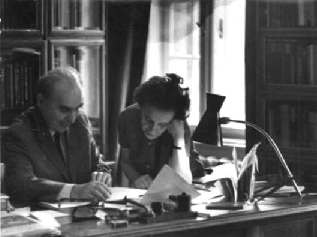Gudrun Wolfschmidt
Institute for History of Science
In the last quarter of the 19th century the Hungarian astronomy
flourished and thanks to the activity of Nikolaus [Miklós]
Konkoly Thege*
Very clear is here the orientation of the periphery (Hungary) with respect
to the center of development (Germany).*
When Konkoly became director of the Hungarian National Institute for
Meteorology and Terrestrial Magnetism in Budapest in 1890, he was so busy
and had no time left for astronomical observations that he tried
to get his observatory in O'Gyalla under state control.
This initiative for institutionalisation of Hungarian astronomy
with the help of the Astronomische Gesellschaft was successful.
Already in the following year 1899 O'Gyalla became a national institute
with the name Royal Hungarian Astrophysical Observatory - Radó
von Kövesligethy (1862-1934) was vice-director from
1899 to 1904.*
At the beginning of the 1920s, after WWI Hungary tried to get in closer
connection to the cultural and scientific life in Europe:
During the reign of the minister Kuno Graf Klebelsberg scientific and cultural institutes, the Collegia Hungarica, were opened in Vienna and Berlin
in 1923/24. The Collegium in Berlin, Dorotheenstraße, under the director
Professor Robert Gragger was in close cooperation with the Hungarian
institute of Berlin university. The main task was the encouragement of
talented young Hungarian scholars and artists. Living in Berlin, they
should build up fruitful and long lasting contacts to Germany.
Two decades very successful work was done until the building was destroyed
in 1945.*
Like Konkoly in the 19th century also another director (since 1943)
László Detre*
After his dissertation he went to Kiel in 1929 and to Vienna in
1930.*
The whole staff in Budapest had got the training in Germany:
The result of Detre's long stay in Germany was not only that he made a
lot of friends but also his research method and scientific work was
influenced very much.
If you look at the graphic of cooperation (Fig. 2), you will see a large activity in the 1880s - in the time of Konkoly. Besides contacts inside of
Hungary there were cooperations with Bothkamp near Kiel, Potsdam, Göttingen,
and Leipzig. Abroad one should mention Vienna, Prague, Zürich, and Italy.
In the eastern foreign countries there was only one cooperation with Russia
on the occasion of a lunar eclipse.
By analyzing the German-Hungarian contacts (cooperation, scientific
travelling of Hungarians, guests from abroad in Hungary) from 1870 to 1899 (Fig. 3),
one recognizes that Germany is in front compared to other western countries
and there is only one example for a contact to eastern countries.
During the meeting of the Astronomische Gesellschaft in 1898 in Budapest
(cf. column TG) there were 53 astronomers: 29 Germans, 6 Austrians,
13 Hungarians and 5 more from Sweden, Russia, Denmark, and Italy.
The executive council consisted of 4 Germans, one Austrian,
one Swede, one Russian, and one Dutch in 1898.
It is obvious that the contacts decrease after the turn of the century (Fig. 4). But one has to consider that the annual reports given by Kövesligethy
since 1900 are less detailed. And in addition there were no meetings
in that time.
As honorary members of the Hungarian Academy of Sciences three Germans
were elected until 1914: Arthur von Auwers (1838-1915), Berlin
Academy of Sciences, in 1890, the director of Munich and Heidelberg
observatories, Hugo von Seeliger (1849-1924), in 1899 and
Max Wolf (1863-1932) in 1908 - in respect to their predicate
to be president of the Astronomische Gesellschaft.
These 3 astronomers from abroad in the Academy should be compared to
36 scholars from science (4 physicists, 6 chemists, and 7 mathematicians)
and 60 scholars from the humanities.
After WWI O'Gyalla was part of Czechoslovakia and was renamed
to Stará Dala (today: Hurbanovo, Slovakia).
Just in time - in 1921 - the instruments and the library of the
observatory O'Gyalla could be transported to Budapest-Svábhegy.
The building of the new National Observatory was finished in 1926 (Fig. 5).
The observatory in Budapest was named after its founder
Konkoly.*
In the postwar period - with the collapse of the Habsburg monarchy,
when Hungary lost two thirds of its territory - Germany continued
to be in scientific and cultural respect the orientation point.
Thus in the years 1920 to 1939 the main contacts are to be found with
Germany (Fig. 6).
Anton [Antal] Tass*
German-Hungarian cooperation from 1920 to 1945. The legend is explained in the caption to Figure 3.
Since the 1920s there was a prominent increase in the German-Hungarian
relationships in comparison with the pre-war period.
In addition one can recognize that contacts to eastern countries are
practically totally missing. During the Budapest meeting (1930)
(cf. column TG) there were 50 German participants, 13 Hungarians,
6 Austrians, and 27 other participants from western countries, here
even from outside Europe: USA, Japan, and South Africa.
Only 9 participants came from eastern countries: Soviet Union,
Czechoslovakia, Poland, and Yugoslavia.
Even during WW II some cooperations with abroad existed: on one hand
with Sweden where the ``neutral bureau'' was erected in Lund in order
to keep up the exchange of important urgent astronomical information,
but also on the other hand with Switzerland and the USA (Mt. Wilson
Observatory) especially in the field of solar physics.
If one looks at the development of research travels, study visits
and visits of meetings, one recognizes especially in the 1930s,
in the period of Detre, a remarkable activity, especially visits
in Germany, in the observatories Berlin-Babelsberg, Potsdam,
Heidelberg, Göttingen, Hamburg, Bonn, Leipzig, and Munich
and to the AG meeting in Danzig in 1939 (Fig. 7).
Travels to the western countries concern the meeting of the
International Astronomical Union (IAU) in Stockholm,
in addition visits in Vienna, Zürich, and Denmark.
In the eastern countries only Kraków was visited in 1938.
László Detre and Júlia Balázs travelled in 1939 to Danzig
to the meeting of the Astronomische Gesellschaft and
visited the observatories Berlin-Babelsberg, Potsdam, and Leipzig.
Even during WWI (1940) there existed study visits of 5 month in
Germany in the context of the German-Hungarian cultural agreement,
financed by the Deutsche Forschungsgemeinschaft (DFG - German
Research Organisation):
A further research stay was given to Lassovszky and Detre
in Göttingen in 1941.
Cooperation or team work should be understood as a first step
of contacts; this could be the exchange of observing results - like
photographic plates for reduction - or for discussion about the
interpretation; finally the results can be published together -
in this case there is no need that any person travels.
The building up of contacts after the war started with different
cooperations, which were only based on exchange of material;
no travels were necessary. In the 1950s the contacts to the west
dominated; it was only a small number but at least twice
as much as the contacts to the east; there were no contacts
to the GDR. Since the 1960s there existed a stronger contact
to the countries of the Eastern European Bloc and also with the GDR;
contacts with the west decreased. A maximum of cooperation with the
east was reached in the 1970s (Fig. 8).
A further chance came up through Detre's participation,
since 1943 director of the Konkoly Observatory, in the IAU
meeting in Zürich in 1948:
In the beginning of the 1950s there existed a first cooperation
with an Eastern partner:
The Hungarian scientists in the post-war time suffered from the large
isolation:*
The affiliation of Hungary in the International Astronomical Union
(IAU) already in 1948 was very different from the development
after WW I, when besides Germany among others Hungary was also excluded from
international societies during the 1920s.*
Inspite of acceptance by the IAU the Hungarian astronomers suffered
due to the isolation. In the beginning of the 1950s there were no
external guests in Hungary, not even from the Eastern Bloc;
no Hungarian astronomer was allowed to travel to a meeting or to
travel for an observation or research stay abroad - with one
rare exception only the director:
The first meeting, which could be visited by many Hungarian astronomers,
took place in Pulkovo Observatory near Leningrad, May 1954:
Two members of Konkoly Observatory, who were not present in Pulkovo,
Júlia Balázs und I. Izsák, were allowed to visit in 1954 a Variable
Star Conference in Moscow which lasted one week.
A real highlight was the travel of the director Detre to the meeting
of the IAU in Dublin in 1955 and then a first travel to West Germany:
Since 1956 the important tradition of the Variable Star Colloquia of the IAU
has been started. During the first colloquium there were not yet western participants,
but four from eastern Germany (Ahnert, Güssow, Hoffmeister, and Schneller);
the total number was 29 participants.*
Starting with a student demonstration in October 23, 1956, a revolution
all over Hungary against the regime developed quickly.
With the second Soviet intervention in November 4, 1956 a mass escape
began over the border to Austria.
As a whole, more than 189,000 people left the country; half of them went
overseas (mainly USA and Canada), the other half stayed in Europe,
20,000 in UK and 14,000 in Germany.
Imre Izsák (1929-1965), a specialist for celestial mechanics (Fig. 9),
was the first who left the country:*
Later four more members of the observatory fled,
so that only half of the staff was left by the end of 1956.
How is the escape mentioned in Detre's annual report of the
Konkoly Observatory?
In Fig. 10 the three years from 1957 to 1959 are analyzed.
The contacts to the Eastern bloc countries and to the GDR increased
considerably, the contacts to the West and to the German Federal
Republic were only possible in a restricted way.
A large variety of sources was available for analyzing the development
from the 1950s to the 1980s.*
After a certain transition time of a few years a positive development
came up with the motto ``Who is not against us, is for us''.
The rules were interpreted in a more liberal way; practically everybody
was at least one time abroad, in the Western countries.*
One possibility for a visit in Germany was to get a Humboldt-Stipendium;
this was given to István Jankovics (* 1943) in 1981/82 for Heidelberg.
As a success of his research travel he emphasized the new personal contacts
as well as the scientific profit (e. g. common publications and cooperations
in the future). He reported: I was very glad, that I had the possibility,
The Budapest University (Béla Balázs) started official relationships
to Jena University (Pfau, Zimmermann); already in the middle of the
1960s it became partner university.
In the 1970s and 1980s mainly the Soviet Union and the GDR were predominant for the studies and research travels.
Thus Jankovics got a further grant in 1986/87 for Potsdam, GDR.
Since 1992 he has been director in Szombathely, where he further on kept
good relationships to Heidelberg - a tradition which has started
already in the time of the Gothard brothers.
In the 1960s until the 1980s a permanent increase of the Eastern
travels (maximum around 1980) is obvious; examples are visits,
common projects for cooperation, travels for studying or astronomical
observations. Already in the 1950s there existed more contacts in this
field with the East and the GDR than with the West.
Since the 1970s the travels to the German Federal Republic preponderated
in comparison with travels to the GDR. Regarding the travels one can
recognise that the Hungarians preferred contacts with the GFR
to the GDR.
The guests from the Eastern Bloc increase from the 1950s until the 1970s;
in the 1970s there is a maximum of guests from the GDR (three times more from the GFR) (Fig. 13). The interest of the Western side concerning visits
in Hungary was relatively small in comparison to the East.
Detre as director of the Konkoly Observatory kept the contacts to the
Western and Eastern astronomers, but also the international relationships.
In September 1968 a meeting of the Commission 27 of the International
Astronomical Union (IAU) took place in Budapest; there were 66 lectures
and 93 participants: 7 GFR, 3 Austrian, 40 further participants from the
West, 9 Hungarians, 9 GDR, and 26 from the East.*
In the 1950s the travels to the East predominated. In the middle
of the 1960s there was a large increase of conference and lecture
travels to the east, but also to the West. In the 1970s regular annual
colloquia were introduced, where astronomers from the Eastern Bloc
could meat each other, especially the Hungarian astronomers could
meet the GDR astronomers (Fig. 14).
Travels to the German Federal Republic were possible in a larger amount
not before the 1960s. In the first half of the 1970s twice more
GFR-travels were undertaken as compared with the GDR-travels.
In the 1980s the GFR-travels decrease; this is difficult to understand
and to interpret, perhaps there are fewer important meetings in this time
in the West; at least the Bamberg Colloquia on Variable Stars stopped
in 1983.
Although the Astronomische Gesellschaft, founded in 1863,
had its place of business and legal seat in Germany, but it represented
with an amount of foreigners of 60% of the members
the international astronomical society until the 1930s. The amount of Hungarians was
from 1913 to 1935 around 2-3%, for example in 1913 there were
13 Hungarians in comparison to 421 members in the Astronomische Gesellschaft,
in 1930 there were 16 Hungarians out of 509 members.
In the time after WW II the Astronomische Gesellschaft had lost its
reputation as an international society, it included then mainly the
German linguistic area; for example there were three Hungarians in 1962
(Detre (until 1974), Herczeg, and Ozsváth) out of 322 members (cf. six
from Czechoslovakia, one Rumanian, and one Yugoslav) or in 1978 five
Hungarians (Balázs B., Herczeg, Ozsváth, Pauliny-Tóth, Szeidl) out of
433 members, finally in 1996 six Hungarians (Balázs Béla, Herczeg,
Jankovics, Kelemen János, Pauliny-Tóth, Szeidl) out of 793 members.
In Konkoly's time the German language was without concurrence
the language of science. The publication series Mitteilungen
der Konkoly-Sternwarte was published from the 1920s until
around 1950 overwhelmingly in German.
Regarding the histogram in Fig. 15, one can recognize, that until 1950 mainly German
was used, practically no English; Hungarian was used especially
in the case of popular astronomical journals.*
In the 1950s a discussion started, whether German is the suitable language for the publications further on.
Since the middle of the 1960s one recognizes a strong increase of the English
and thus a decrease of the German publications; a certain part of publications in Russian can also be found besides some Hungarian publications (Fig. 16).
Looking at the publications of Budapest University from 1978 to 1986,
one recognizes English as the prominent language, but here no Russian
is present (Fig. 17).
In analyzing the language used in meetings or for guest lectures
(taken from the title of the lecture in the programme or in the annual
report), one recognizes, that German played still an important role,
but English increased in its significance. Only in the 1970s Russian
was used several times; but it is not clear, whether the lecture was
presented in Russian or it was translated (Fig. 18).
A compilation of the instruments used by Konkoly in his observatory
O'Gyalla is given in Fig. 19. Around 66% came from German makers
and 17% from abroad, half of them from England.*
In the following the existing and newly founded observatories
in the German states and in Hungary should be compared.
In Germany there were 16 observatories around 1900 and this number
did not change until 1945.
After WW II there existed eight observatories in West Germany
(Bamberg, Bonn, Freiburg, Göttingen, Hamburg-Bergedorf, Heidelberg
Landessternwarte, Kiel, München) and four in East Germany (APO Potsdam,
Potsdam-Babelsberg, Jena, Sonneberg). In the GFR 14 institutes/institutions
for astronomical research were founded,*
In 1945 Hungary had the Konkoly Observatory as a national observatory
and a chair for astronomy at Budapest University.*
In 1958 the institute in Debrecen was founded as a solar observatory
(Dezsö director). In 1982 this Heliophysical Observatory and the Konkoly
Observatory were unified as the Astronomical Institute of the
Hungarian Academy of Sciences.
In the 1960s Szombathely, followed from Gothard's Observatory
in Herény (founded in 1881), was used again as an observatory.
In Szombathely an observing station was erected for tracking soviet satellites
already in the 1960s. In 1977/78 the university of
Budapest took over the observatory and bought a 60-cm-reflector
from Carl Zeiss Jena.
Since the 1960s smaller observatories have been built in Szeged
(Odessa-Telescope, 40 cm Cassegrain) and in Baja (1966).
The Piszkéstetö Mountain Station (in the Mátra mountains) of the Konkoly Observatory is especially important, because
it enlarged the possibilities of observation for Hungary considerably.
Looking at the equipment of the Hungarian observatories, Zeiss of Jena -
like you would expect - is dominating: Satellite observing cameras,
Schmidt cameras, blink comparator, coordinate measuring
machine.*
Observing possibilities for Hungarian astronomers existed also
with the large telescopes on Crimea, in Byurakan, with the 2 m reflector
in Bulgaria, and with the Schmidt reflector of Tautenburg Observatory
near Jena, GDR.
At the end of the 19th century Hungary as a country at the periphery
used as an orientation always a country in the center of scientific
development - this was at that time Germany. The predominance of
Germany in choosing the emphasis of fields of research is very easy
to recognize and also in choosing the instrumental equipment
(transfer of technology).
But the contacts had not only one direction; Hungary emancipated
itself in scientific respect since the 1920s and developed in the
direction to a scientifically equivalent partner by delivering
important contributions. The appreciation of the Hungarian
achievements is obvious in electing Tass in the managing committee
of the Astronomische Gesellschaft in 1930.
Looking at the further development after WW II, where László Detre
had an important influence, one can distinguish four periods:
Bartha, L., 1994, Journal for History of Astronomy, 25, No. 2, 77
(1994JHA....25...77B)
Beckman, G.W.E., 1985, Sterne und Weltraum, 24, 439
Dorschner, J., 1998, Astronomie in Thüringen, Jenzig-Verlag
Herrmann, D.B., 1975, Vortrage und Schriften der Archenhold-Sternwarte Berlin-Treptow, Nr. 47, 1
Johnson, H.L., Sandage, A.R., 1955, ApJ, 121, 616
(1955ApJ...121..616J)
Kelényi, B.O., 1930, Mitt. Sternwarte Budapest, 2, 1
CoKon2
Kenessey, K., 1942, Kleine Veröffentlichungen der dem kgl. ung. Ministerium für Ackerbau unterstehenden kgl. ung. Reichsanstalt für Meteorologie und Erdmagnetismus Budapest., Neue Reihe, No. 14, 26
Móra, K., 1938, VJS Astron. Ges., 73, 198
Oltay, K., 1935, Gerlands Beitrage zur Geophysik, 43, Heft 4, 337
Stolz, R., Wittig, J., 1993, Carl Zeiss und Ernst Abbe - Leben, Wirken und Bedeutung, Jena: Universitätsverlag
Szeidl, B., 1976, Mitteilungen der Astronomischen Gesellschaft, 38, 7
(1976MitAG..38....7S)
Vargha, M., Patkós, L., Tóth, I., 1992, Konkoly Observatory Monographs, 1, 1
Konkoly Obs. Monographs No. 1.
Wolfschmidt, G., 1992, Konkoly Observatory Monographs, 1, 69
Konkoly Obs. Monographs No. 1.
Wolfschmidt, G., 1999, In: Fischer, Holger (ed.): Deutsch-ungarische Beziehungen in Naturwissenschaft und Technik nach dem Zweiten Weltkrieg, München: Oldenbourg (Südosteuropäische Arbeiten, 103), 337
Hamburg University
Konkoly and the Foundation of the Hungarian National Observatory
* Kenessey, K. von: Nikolaus v. Konkoly Thege,
der Astronom. In: Kleine Veröffentlichungen
der dem kgl. ung. Ministerium für Ackerbau unterstehenden kgl.
ung. Reichsanstalt für Meteorologie und Erdmagnetismus Budapest.
Neue Reihe No. 14 (1942), p. 26. - Steiner, Lajos:
[Biographie von Konkoly]. Budapest. - Marik, Miklós: Konkoly
Thege Miklós (1842-1916). In: Csillagászati évkönyv (1992),
p. 145-147. Bartha, Lajos: Konkoly Thege Miklós emlékezete.
Budapest 1992. Vargha, Magda; Patkós, László; Tóth, Imre
(eds.): The Role of Miklós Konkoly Thege in the History of
Astronomy in Hungary. Proceedings of the International Meeting
``120th Anniversary of Konkoly Observatory'' in Budapest,
5-6. Sept. 1991. Konkoly Observatory of the Hungarian
Academy of Sciences, Monographs No. 1, Budapest 1992.
(1842-1916) the German-Hungarian relationships in the
field of astronomy could be activated.
* This article is based
on an earlier publication: Wolfschmidt, Gudrun: Deutsch-ungarische
Beziehungen in der Astronomie und Astrophysik. In: Fischer, Holger (ed.):
Deutsch-ungarische Beziehungen in Naturwissenschaft und Technik nach dem
Zweiten Weltkrieg. München: Oldenbourg (Südosteuropäische Arbeiten, 103)
1999, p. 337-373. This research was supported by Prof. Tibor Herczeg,
Oklahoma, and in Budapest by Prof. Béla Szeidl and Magda Vargha, librarian
of the Konkoly Observatory and Prof. Béla Balázs of the Eötvös University.
Astrophysics - with its topics: spectroscopy, photometry and photography
- was born just before in Germany.
Konkoly as an important scientist and organiser belonged to the few pioneers
of astrophysics in the world. Already ten years after starting his
astrophysical work he had an international reputation. Konkoly built up
international contact through travelling, in order to get to know other
astrophysicists and their observatories. There were especially good
contacts to the Potsdam observatory. He had correspondence with astronomers
everywhere in the world and scientists from abroad visited his observatory.
* Study in Vienna from 1881 to 1884, 1882-87
observer in O'Gyalla, 1899-1904 vice-director of O'Gyalla Observatory,
in 1904 full professor and in 1910 director of the Seismographical
Observatory, who had closest contacts to the German Seismological
Observatories. Cf. Oltay, Karl: Radó v. Kövesligethy. In: Gerlands
Beiträge zur Geophysik 43, Leipzig 1935, Heft 4, p. 337-339.
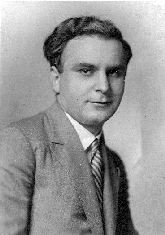

* Information from the ``Haus der Ungarischen Kultur'',
Alexanderplatz, 1973-1989, Cultural institute ``Haus Ungarn'' since 1990.
* Szeidl, Béla: László Detre. In: Mitteilungen der Astronomischen Gesellschaft 38 (1976), p. 7-9.
[until 1933: László Dunst] (1906-1974) could get his scientific training
in Germany, at the Collegium Hungaricum in Berlin, in 1927 to 1929 (Fig. 1).
* Cf. VJS 65 (1930), p. 110.
* The Heliophysical Observatory was in
Budapest in the 1950s, then in Debrecen from 1958 on.
went to a German speaking country. He visited
Prof. Max Waldmeier (1912-2000) in Zürich in 1939.
* Herczeg,
Tibor: Deutsch-ungarische Beziehungen, Teil I: Vorgeschichte.
Fax vom 26.8.1997. I am indebted to Professor Herczeg for giving me his report, and for proofreading my manuscript when we met in Gotha on 12 May 1998.
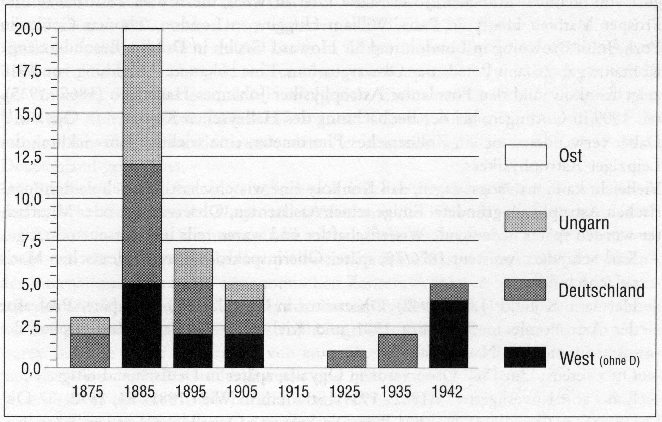
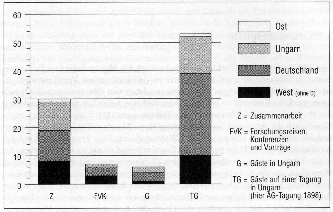
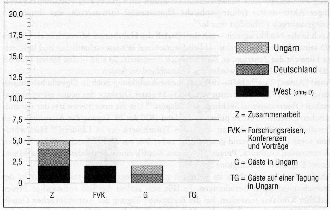
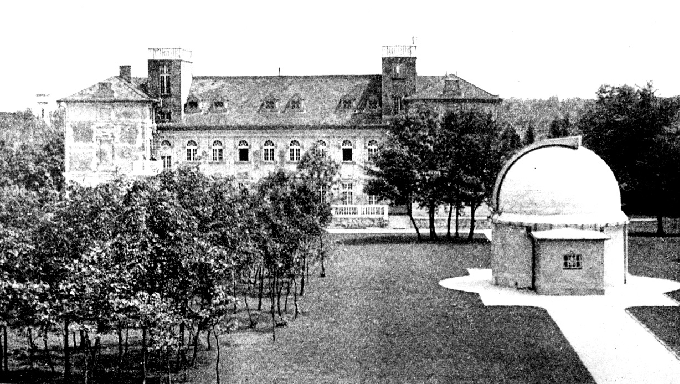
* Kelényi, B. Ottó: A magyar csillagászat története.
Über die Geschichte der ungarischen Astronomie. In: Astronomische
Abhandlungen des Kgl.-Ung. Astrophysikalischen Observatoriums von
Konkoly's Stiftung in Budapest-Svábhegy Bd. 1 (1930), Nr. 2, p. 51-106
(in German). - Beckman, G.W.E.: Astronomie in Ungarn. In: Sterne und Weltraum
24 (1985), p. 439-443. - Herrmann, Dieter B.: Sternforscher und
Sternfreunde in der VR Ungarn. In: Vorträge und Schriften der
Archenhold-Sternwarte Berlin-Treptow Nr. 47 (1975), p. 1-16.
The emphasis of the work was astrophysics, but in contrary to Konkoly's
preference for spectroscopy since the turn of the century and especially
in the 1920s, the main topic became photometry and variable
stars.*
* In order to do photometry visual photometers were acquired
in 1901-1903: a wedge photometer, a Zöllner photometer, a large astro
photometer, all made by Toepfer in Potsdam, as well as a spectral
photometer, made by Schmidt & Hänsch, Berlin, cf. VJS 36 (1901),
p. 131, VJS 37 (1902), p. 143, VJS 38 (1903), p. 139.
Already in 1914 there was an initiative to continue the
``Göttingen Aktinometrie'' (photographic photometry), a project
which was stopped by the outbreak of WWI.*
* Cf. VJS 49 (1914),
p. 186. An 8'', made by Heyde, Dresden, was used in combination
with a Schwarzschild ``Schraffierkassette'' (like for the Göttingen
Actinometry).
* Móra, K.: Anton Tass. In: VJS 73
(1938), p. 198-202.
(1876-1937), who got his scientific training
in O'Gyalla, became vice-director in 1913 and first director from
1923 to 1934.*
* Tass was an assistant from 1899 and in
1902-13 observer in O'Gyalla, in 1913 vice-director
of the O'Gyalla observatory.
In order to present the new observatory to the astronomical public
in 1930 the 29th meeting of the Astronomische Gesellschaft
took place in Budapest with 106 participants from 16
countries.*
* Bericht über die Versammlung der
Astronomischen Gesellschaft zu Budapest 1930, August 8-12. In:
VJS 65 (1930), p. 222-254, here p. 245.
During this meeting Tass was elected as member of the executive council
which consisted of 5 Germans (Max Wolf as president, Guthnick, Prager,
Hopmann, Kopff), one Swede (Lundmark) and one English (Eddington).
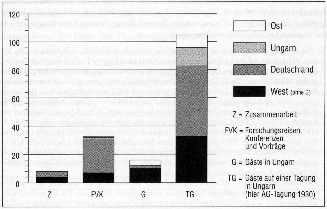
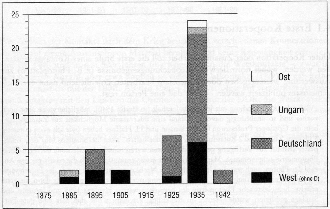
* Herczeg,
Tibor: Deutsch-ungarische Beziehungen, Teil I: Vorgeschichte.
Fax vom 26.8.1997. Cf. VJS 76 (1941), p. 85.
But the research stays, research travels, common meetings, and intense
contacts to Germany and to abroad stopped completely after 1945.
* Herczeg, Tibor:
Deutsch-ungarische Beziehungen, Teil I: Vorgeschichte.
Fax vom 14.9.1997.
* Herczeg, Tibor: Deutsch-ungarische
Beziehungen, Teil I: Vorgeschichte. Fax vom 28.8.1997. -
Johnson, H. L., Sandage, A. R.: ApJ 121 (1955), p. 616. Cf.
VJS 70 (1935), p. 144 (Photographs of M 67, made with Göttingen's
astrograph by Móra with agreement of Heckmann and Kienle).
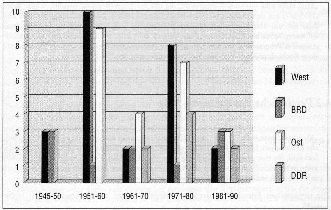
* Herczeg, Tibor: Deutsch-ungarische
Beziehungen, Teil I: Vorgeschichte.
Fax vom 31.8.1997. Cf. Mitteilungen der Konkoly Sternwarte
Nr. 29. (1952).
* Herczeg, Tibor: Deutsch-ungarische
Beziehungen, Teil I: Vorgeschichte. Fax vom 31.8.1997.
* Herczeg, Tibor: Deutsch-ungarische
Beziehungen, Teil II: Isolation und erste Kontakte. Fax vom 2.9.1997.
* Contacts existed only in 1950 with the
Astronomisches Recheninstitut in Berlin, further in 1952 with the
Nautical Almanac in Washington, D.C., USA, and with Belgium, in 1953
with Leiden, Greenwich, and Mt. Wilson, USA (sunspots) as well as with Heidelberg in 1955.
1. Die Förderung der Bibliothek wurde aufrecht erhalten und
die internationale Literatur stand uns immer prompt und ziemlich
vollständig zur Verfügung.
2. Ungarn wurde in der IAU [International Astronomical Union]
zugelassen und Dr. Detre (der seit 1943 das Direktorat der Sternwarte
innehatte) hatte an der Züricher IAU-Generalversammlung (1948)
teilnehmen können.
* Herczeg, Tibor: Deutsch-ungarische
Beziehungen, Teil I: Vorgeschichte. Fax vom 28.8.1997.
* Schröder-Gudehus,
Brigitte: Deutsche Wissenschaft und internationale Zusammenarbeit 1914-1928.
Ein Beitrag zum Studium kultureller Beziehungen in politischen Krisenzeiten.
Genf 1966.
Not only personal contacts of the scientists with foreign colleagues were made
difficult, but also the official contacts during meetings. Because the
affiliation of Germany was not successful in 1922 and 1925, one succeeded
by choosing a meeting place (Copenhagen) in a neutral country
for the meeting of the Astronomische Gesellschaft (AG) in 1926,
that astronomers from all over the world met again and made contacts -
independent of the new international society. Not before 1928
during the IAU meeting in Leiden the 10 year long isolation of the German,
Austrian, and Hungarian astronomers was finished because they were
accepted as participants. After this additional information about
the situation in the 1920s, we look again what happened in the 1950s.
Kontakte mit der Astronomie in der DDR aufzunehmen erschien aussichtslos.
Selbst Versuche, Kollegen in den Nachbarländern zu treffen,
führte zu keinem Ergebnis. Detre versuchte, zum Beispiel, den
rumänischen Astronomen Dr. Armeanca (Cluj?) einzuladen - wie
wir später erfuhren, hatte ihn die Einladung nie erreicht.
Wir fanden auf jeden Fall die Situation, täglich und jahraus-jahrein,
zum selben kleinen Kreis von 4 bis 5 Kollegen zurückzukehren,
sehr frustrierend und sogar hinderlich, was die Qualität der
Forschung betrifft. Gewiß, wir lasen mit großem Interesse
die Forschungsberichte und versuchten uns daran zu orientieren,
aber ein Durchbruch in der herkömmlichen Arbeit war nicht zu
erwarten.
* Herczeg, Tibor: Deutsch-ungarische
Beziehungen, Teil II: Isolation und erste Kontakte. Fax vom 2.9.1997.
After the Leningrad meeting they had the possibility to travel to the
total solar eclipse, June 30, 1954, in North Kaukasus.
Nach der Eröffnung gab es eine Möglichkeit, Leningrad und
Moskau zu besichtigen und interessierte Teilnehmer hatten auch
eine Einladung bekommen, die totale Sonnenfinsternis am 30. Juni
1954 vom Nordkaukasus aus, unweit von Pyatigorsk, mit ihren eigenen,
mitgebrachten Instrumenten zu beobachten. So ergab sich für
viele Gäste die Gelegenheit, fast zwei Monate in der Sowjetunion
zu verbringen. Obwohl die erstaunlich zahlreiche ungarische Delegation
(6 Astronomen, ein Mathematiker, ein Höhenstrahlungsphysiker
und ein Beamter der Akademie) eigentlich kein eigenes Instrument
vorweisen konnte, sind sie ebenfalls mitgefahren, dabei waren
sie häufig zusammen mit der DDR, auch mit der tschechischen
Delegation. Wichtige persönliche Kontakte wurden dabei angeknüpft,
die zwei Jahre später eine nicht geringe Rolle spielten.
Dies war der Anfang der sich langsam normalisierenden internationalen
Beziehungen.
* Herczeg, Tibor: Deutsch-ungarische
Beziehungen, Teil II: Isolation und erste Kontakte. Fax vom 4.9.1997.
* Herczeg,
Tibor: Deutsch-ungarische Beziehungen, Teil II: Isolation und
erste Kontakte. Fax vom 4.9.1997.
The subsequent meeting of the Astronomische Gesellschaft took place in
Bamberg in 1957.
* Participants of the 1956 conference: (IAU): 9 Hungary, 4 GDR, 5 GFR, 1 UK, 2 Netherlands, 1 Italy,
1 Belgium, 3 Poland, 1 Czechoslovakia, 2 China, and 5 USSR. The lectures were published in the Mitteilungen series of the Konkoly Observatory: Nr. 42, Budapest 1957.
These IAU Colloquia took place later in Budapest (1968, 1975) and in
Bamberg (1959, 1965, 1977, and 1983).*
* The meeting in Bamberg
in 1977 was my personal first meeting and I got to know among others
Prof. Herczeg and the participants from Hungary.
Zunächst schien in der Sternwarte eine neue Epoche begonnen
zu haben: man plante verschiedene Kooperationen, besonders mit
den DDR-Sternwarten aber auch mit Italien (Asiago). Diese Pläne
wurden aber durch die rasch anrollenden Ereignisse des Oktoberaufstandes
in den Schatten gestellt. Die Sternwarte hatte einen recht bescheidenen,
aber aktiven Anteil an den Ereignissen und nach der fatalen Rückkehr
der sowjetischen Truppen am 4. November 1956 tauchte sehr bald
die Idee einer Flucht aus dem Lande auf. Furcht vor Retorsionen
aber auch die damals anscheinend hoffnungslose Lage für zukünftige
Forschung machten dies hauptsächlich zu einem Problem der jüngeren
Leute.
* Herczeg, Tibor: Deutsch-ungarische Beziehungen,
Teil III: Fluchtgeschichte. Fax vom 19.8.1997.
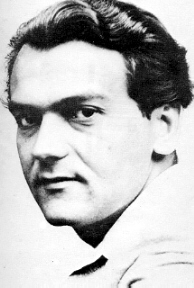
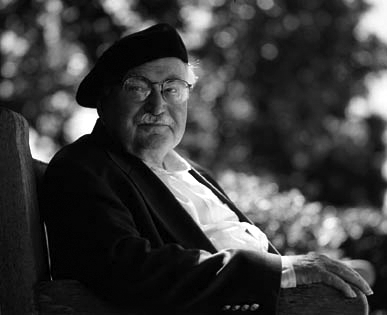
* Fred Whipple has written
an obituary. Cf. also Marik, Miklós: Csillagászattörténeti életrajzi
lexikon A-Z. Budapest 1982. A gondolat tükre.
Izsák Imre élete (1929-1965). Zalaegerszeg 1997.
* Herczeg, Tibor: Deutsch-ungarische
Beziehungen, Teil III: Fluchtgeschichte. Fax vom 19.8.1997.
Neither Herczeg, nor Ozsváth wanted to stay in Vienna,
but tried to reach West Germany:*
* Herczeg,
Tibor: Deutsch-ungarische Beziehungen, Teil III: Fluchtgeschichte.
Fax vom 19.8.1997.
* There existed generous
support by the Lions Club and by the Rockefeller Foundation, about
1000.-DM per month, later 250.-DM by the Ford Foundation.
But there existed no possibility for both, to find a permanent
position in Germany; finally they found a job in the USA:
Zuerst wurde Ozsváth eine Arbeitsmöglichkeit an der Hamburger
Sternwarte in Bergedorf angeboten durch den Direktor Prof. O.
Heckmann - schon im Februar 1957. Aus der ursprünglich bescheidenen
Rechenarbeit am AG-Katalog wurde bald photographische Photometrie
am großen Schmidt-Spiegel. Ozsváth promovierte 1959 an der
Universität Hamburg mit einer photometrischen Studie des alten
offenen Sternhaufens NGC 7789. Danach arbeitete er mit dem Theoretiker
Dr. E. Schücking zusammen. Ihr wesentlicher Beitrag zur Kosmologie
(``Finite rotating universe'') wurde noch in Hamburg publiziert.
Herczeg wurde im April 1957 unter etwas ähnlichen Umständen
ein Arbeitsplatz an der Bonner Universitäts-Sternwarte zuteil,
durch dessen damaligen Direktor Prof. Friedrich Becker. Herczeg
sollte auf der Außenstation in der Eifel, auf dem Observatorium
Hoher List, seine in Budapest begonnene lichtelektrische Arbeit
fortsetzen. Er promovierte 1959 an der Universität Bonn mit
einer 3-Farben-Photometrie des Algol-({beta} Per) Systems. Er arbeitete
an mehreren Bedeckungssystemen mit Dr. Hans Schmidt zusammen.
Später (1962) siedelte er an die Hamburger Sternwarte über,
als Observator, dann als Hauptobservator, und er habilitierte
sich 1966 mit einem Thema in Planeten-Kosmogonie. Als Beobachter
war er spektroskopisch tätig, mit Hilfe des
1 m-Spiegels.
* Herczeg, Tibor:
Deutsch-ungarische Beziehungen, Teil III: Fluchtgeschichte.
Fax vom 19.8.1997.
Vidéki verließ auch bald Wien und wanderte nach Kanada aus.
Wo Balogh verblieb ist unbekannt.
Herczeg akzeptierte 1970, endgültig 1971, eine Stelle als Professor
of Physics and Astronomy an der University of Oklahoma in
Norman/Oklahoma/USA.
Es bestand für längere Zeit eine lebhafte, auch persönliche
Verbindung zwischen dem kleinen Observatorium in Norman und der
Bamberger Remeis-Sternwarte [Astronomisches Institut der Universität
Erlangen-Nürnberg], gegründet auf verwandte Forschungsprojekte
auf dem Gebiet der Veränderlichen Sterne, auch auf das Vorhandensein
ausgedehnter Plattenarchive an beiden Instituten. Mehrere Mitglieder
der Bamberger Sternwarte besuchten Norman, während Herczeg,
aus Norman beurlaubt, vier Semester (1985-1987) in Bamberg bzw.
an der Universität Erlangen verbracht hatte, als Vertreter
für Prof. Jürgen Rahe (während seiner Beurlaubung zu NASA
in Washington, D.C.).
* Herczeg, Tibor: Deutsch-ungarische
Beziehungen, Teil III: Fluchtgeschichte. Fax vom 19.8.1997. Also me -
as a student of the Remeis Observatory in Bamberg - visited Professor
Herczeg in Oklahoma in December 1978 and made reduction of variable stars
on photographic plates.
* Detre, L.: Jahresbericht für
Jan. 1956 bis Sept. 1957. In: Évi jelentések 1940-1960,
p. 92.
* Detre,
L.: Jahresbericht für 1957. In: Évi jelentések 1940-1960, p. 98.
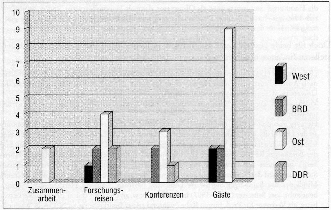
* 1. Archive material in the Konkoly
Observatory - offered by the librarian Magda Vargha:
- Annual reports of the Konkoly Observatory by Detre, from 1940 to
1973 (two volumes - typewritten with handwritten supplements)
- Annual reports of Debrecen by Dezsö, from 1962 to 1982
- Guest book of the Konkoly Observatory
2. Handwritten supplements of Prof. Tibor Herczeg, transmitted by
fax in Aug./Sept. 1997
3. Printed annual reports in Csillagászati évkönyv from 1959
to 1987, especially since 1974, written by Dr. Béla Szeidl, successor of
L. Detre. -
Printed annual reports in the Almanach MTA (1967-1980, 1985, 1991),
in the Academy (1975-1980), in Meteor 1991-1997. -
Printed annual reports of the University Budapest (ELTE) in
Csillagászati évkönyv 1970-1992, written by Miklós
Marik, later by Béla Balázs
4. Interview (Aug. 1997) with director Béla Szeidl, Konkoly
Observatory, and Prof. Béla Balázs, Eötvös University, Budapest
5. Papers and documents of the Humboldt-Stiftung concerning
I. Jankovics, director of the Gothard-Observatory in Szombathely,
department of Budapest University
6. Annual reports of observatories in Western Germany, published in
the Mitteilungen der Astronomischen Gesellschaft
and discussions with German and Austrian astronomers.
7. Compilation of a data base with over 900 entries. The
translation of the Hungarian material was done with the help of
Andreas Korpas and typed in the data base by Celia von Lindern.
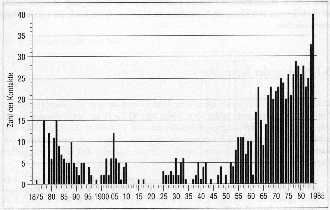
* Reported
by Béla Balázs, in Aug. 1997. He spent one year (1961/62) in Hamburg and
in 1964 again four months.
Especially in the field of science, where a strong interdependence
from the modern development is obvious, there were only a few problems
with travels from the 1960s on (Figs. 11-12). For travels to West Germany it was
easier to get a permission, but for travels to the USA it was easier
to get a grant (a financial support).
* Jankovics,
István: Bericht an die Humboldt-Stiftung vom 26.11.1983.
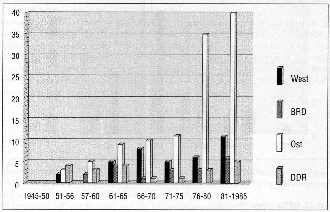
Research travels from 1945 to 1990
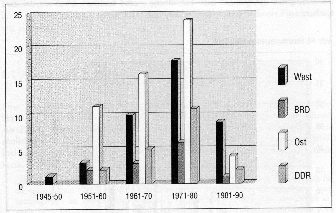
* The lectures
were published: Detre, L. (ed.): Non-periodic Phenomena
in Variable Stars. Budapest 1969.
Detre was vice-president in 1964-67, in 1967-70 President of the
Commission 27 of the IAU and founder and the first editor of the IBVS
(Information Bulletin on Variable Stars).
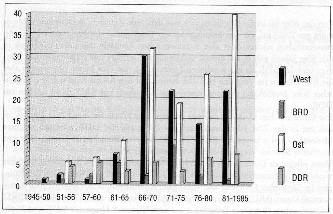
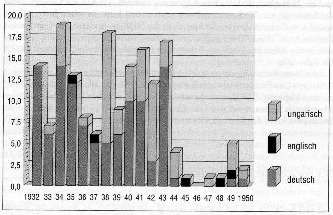
* In 1924
the astronomical society ``Stella'' was founded by Antal Tass and
József Wodetzky, ``Almanach'' appeared in 1924, the journal ``Stella''
in 1926 (it existed only until 1931 due to the unfavourable economic
development). In 1933 the astronomical society ``Stella'' was changed
into a section of the ``Kgl. Ungarische Naturwissenschaftliche
Gesellschaft'' (Royal Hungarian Scientific Society). The Stella
Almanach was merged with the yearbook of the ``Naturwissenschaftliche
Gesellschaft''. Cf. VJS 70 (1935), p. 145-146.
* Herczeg, Tibor: Deutsch-ungarische
Beziehungen, Teil I: Vorgeschichte. Fax vom 31.8.1997.
Cf. Mitteilungen der Konkoly Sternwarte Nr. 29 (1952).
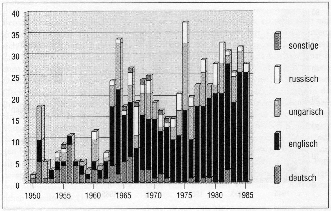
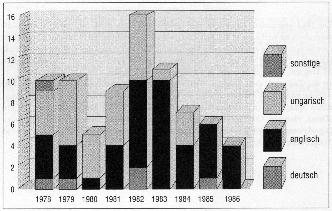
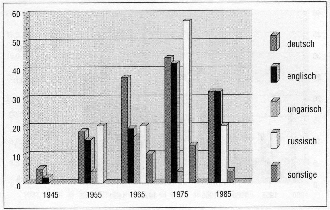
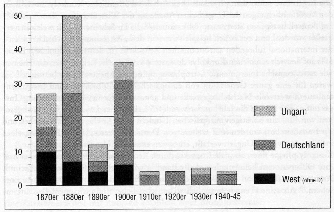
* Today many
of them are in the Technical Museum of Budapest. Cf. Wolfschmidt, Gudrun:
Astronomical Instruments of the Era Konkoly in Respect to their Significance
to Astrophysics. In: Vargha, Magda; Patkós, László; Tóth,
Imre (eds.): The Role of Miklós Konkoly Thege in the History
of Astronomy in Hungary. Proceedings of the International Meeting
``120th Anniversary of Konkoly Observatory'' in Budapest,
5.-6. Sept. 1991. Konkoly Observatory of the Hungarian Academy
of Sciences, Monographs No. 1, Budapest 1992, p. 69-82.
- Bartha, Lajos: Astrophysical Instruments in Hungary, 1871-1911.
In: Journal for History of Astronomy 25 (1994), No. 2, p. 77-91.
If you look in detail at the provenience of the instruments,
one can recognize that in the beginnings of the 1870s - due to Konkoly's
travels abroad - the English instruments have overweight in comparison
to the German instruments. In the last two decades of the 19th century the amount of German instruments increases similarly to the percentage of instruments, made in
Hungary or especially in the workshops of the observatory.
In 1900 the origin of the instruments is mainly Germany;
from 1910 on there are no instruments from abroad any more.
* Astronomisches
Rechen-Institut (ARI) Heidelberg, Institut für Theoretische
Astrophysik Heidelberg, Astronomisches Institut der Universität
Tübingen, Lehr- und Forschungsbereich Theoretische Astrophysik
der Universität Tübingen, Institut für Astronomie und Astrophysik
der TU Berlin, MPI für Astrophysik München-Garching, MPI
für Extraterrestrische Physik München-Garching, MPI für
Astronomie Heidelberg, MPI für Radioastronomie Bonn, Observatorium
Hoher List (Bonn), Astronomisches Institut der Universität
Münster, Astronomisches Institut der Universität Würzburg,
1. Physikalisches Institut der Universität Köln, Astronomisches
Institut der Universität Bochum
but only one new institute
in the GDR.*
* Tautenburg Observatory.
* Department of
Astronomy at Péter Pázmány University in Budapest;
since 1950 Eötvös Loránd Tudományegyetem (ELTE), headed by:
Radó von Kövesligethy (1897-1933), Károly Móra (1933-1934), József Wodetzky (1934-1941), Károly Lassovszky (1942-1949, he had to change to ``Amerikanistik'' due to political reasons), István Földes (1949-1964),
László Detre (1964-1968, at the same time director of the Konkoly Observatory), Béla Balázs (1968-1990), Marik Miklós (1990-1998), and Bálint Érdi (1998-). Cf. VJS 70 (1935), p. 138
and Csillagászati évkönyv (1970), p. 94-100.
The 1 m telescope (1974) was made - according to an information
from Hans G. Beck - in cooperation with the Hungarian firm VILATI,
Institute for Electroautomatics, in Budapest.*
* According to an information
from Hans G. Beck (May 12, 1998), former head of the department
astronomy of Zeiss in Jena, four such Schmidt-telescopes (technical
dates: 600 mm, correction plate 900 mm, focal length 1800 mm)
were made in the end of the 1950s and delivered apart from Budapest
also to Jena, Torún [Thorn], and Beijing.
* According to an information
from Hans G. Beck in Jena (May 12, 1998) the 1 m telescope
with an English mounting EM 1 saw first light in 1974 thanks to
Béla Balázs who was very active in getting this telescope
for the observatory.
* Zeiss had
made in advance two nearly identical telescopes and delivered to India
(Nainital and Kavalur). For the telescope for Hungary already a
digital guiding was introduced, while the telescopes for India had
still analogue guiding.
In the following time VILATI built computer guiding devices for
further nine 1 m telescopes, for the two 2 m telescopes for Bulgaria
(Rozhen) and Ukraine (Kiev, Terskol), and for the horizontal solar
research equipment. Also for the 2 m telescope in Ondrejov
near Prague a VILATI guiding system was added during a
modernisation.*
* It was necessary to improve the electrical
guiding system of the telescope and Zeiss had no free capacity
at that time. VILATI had a lot of experience in the field of
guiding of machine tools and had reached a relatively high standard.
The reason was that it was easier in Hungary than in the GDR
to get modern chips from Siemens.
A team under leadership of the engineer Ottó Bánhegyi was active
in the following years in the framework of international cooperation
in the RGW for Zeiss.
* For the importance and development of the
Zeiss works see e. g. Stolz, R., Wittig, J. (eds.):
Carl Zeiss und Ernst Abbe - Leben, Wirken und Bedeutung.
Jena: Universitätsverlag 1993. Dorschner, Johann: Astronomie
in Thüringen. Skizzen aus acht Jahrhunderten. Mit besonderer
Berücksichtigung der DDR-Zeit und der neuen astronomischen
Forschungslandschaft im Freistaat Thüringen. Jenzig-Verlag 1998.
Some more modern instruments and auxiliary equipment for photoelectric
photometry were ordered in the USA (iris diaphragm photometer made
by Askania). In the workshop of the Konkoly Observatory
UBV photoelectric photometers were built.*
* A UBV
photometer was built: in 1972 for the 50 cm reflector and
in 1974 for the 1 m reflector in the Piszkéstetö Mountain Station;
in 1986 a new UBVRI photometer with photon counting device.
